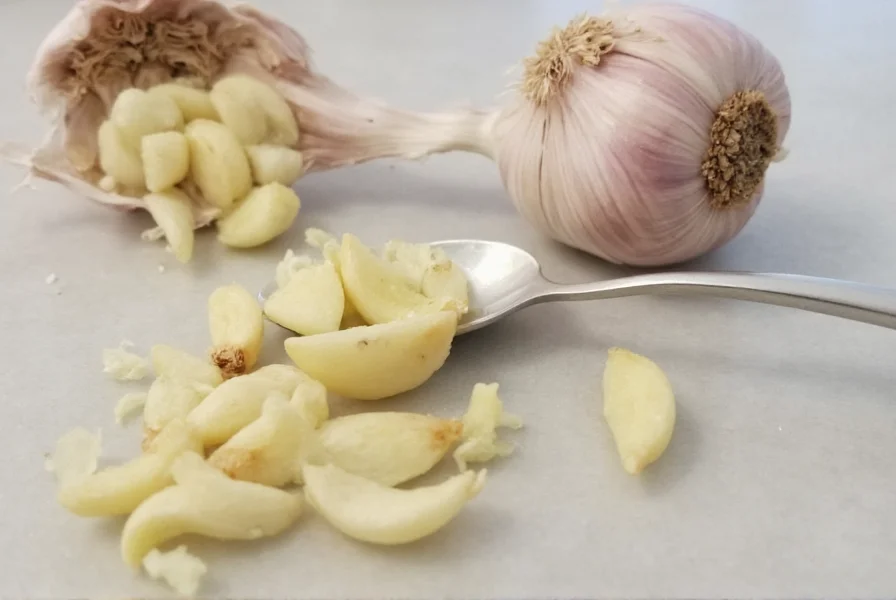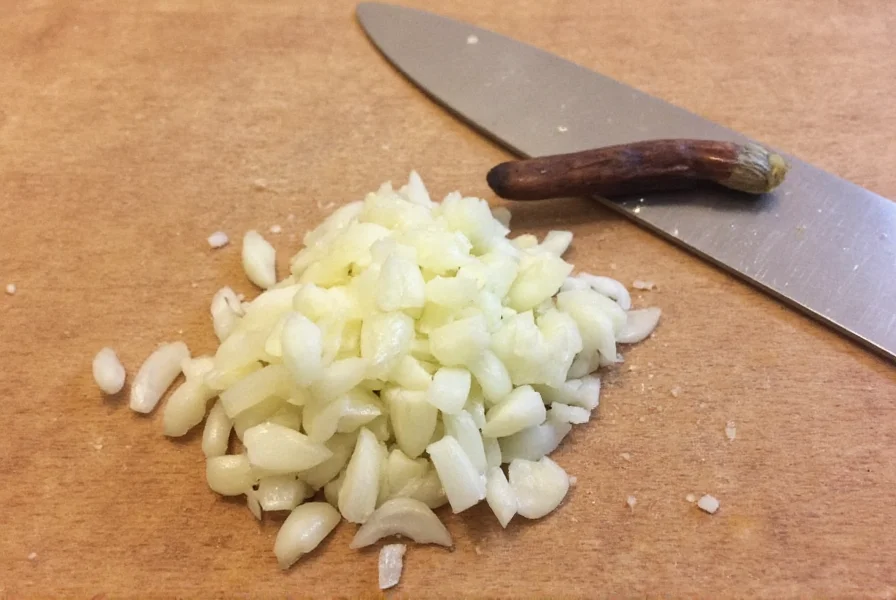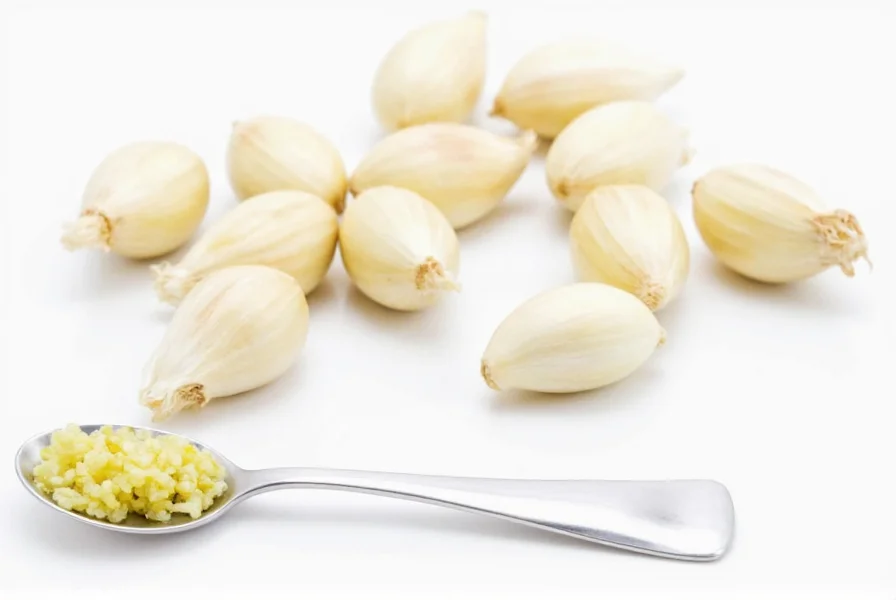Understanding garlic measurements is essential for precise cooking and recipe execution. Many recipes specify garlic in cloves while others use volume measurements like teaspoons, creating confusion in the kitchen. This guide provides accurate conversions and practical tips for working with garlic in your cooking.
Garlic Clove to Teaspoon Conversion Explained
When converting garlic cloves to teaspoons, it's important to recognize that garlic cloves vary in size. A medium-sized garlic clove (about 1 inch long and 3/4 inch in diameter) typically equals 1/2 teaspoon of minced garlic or 1 teaspoon of chopped garlic. This difference occurs because minced garlic packs more densely than coarsely chopped pieces.
| Garlic Form | 1 Clove | 3 Cloves | 6 Cloves |
|---|---|---|---|
| Minced | 1/2 teaspoon | 1 1/2 teaspoons | 1 tablespoon |
| Chopped | 1 teaspoon | 1 tablespoon | 2 tablespoons |
| Garlic Powder | 1/8 teaspoon | 3/8 teaspoon | 3/4 teaspoon |
Factors Affecting Garlic Measurements
Several variables influence the garlic clove to teaspoon conversion accuracy:
Clove Size Variations
Garlic cloves range from small (petite varieties) to extra-large (common in grocery stores). For precise measuring garlic for recipes:
- Small clove: 1/4 teaspoon minced
- Medium clove: 1/2 teaspoon minced
- Large clove: 3/4 teaspoon minced
- Extra-large clove: 1 teaspoon minced
Preparation Method Matters
The way you prepare garlic significantly impacts volume:
- Minced: Finely chopped (1/16 inch pieces) yields the most compact measurement
- Chopped: Coarsely cut pieces take up more space
- Pressed: Garlic press yields similar volume to minced but with more liquid
- Roasted: Roasted cloves shrink and become softer, affecting volume

Practical Kitchen Applications
When following recipes that specify different garlic measurements, these garlic measurement equivalents will help you adapt:
Substituting Between Forms
If your recipe calls for fresh garlic but you only have powdered:
- 1 clove fresh garlic = 1/8 teaspoon garlic powder
- 1 teaspoon minced garlic = 1/4 teaspoon garlic powder
Remember that garlic powder has a more concentrated flavor, so adjust accordingly. For the question how much minced garlic equals one clove, the standard remains 1/2 teaspoon for medium cloves.
Measuring Without Tools
When you don't have measuring spoons handy:
- One medium clove roughly fills the tip of your thumb
- Three cloves fill about half a standard bottle cap
- Six cloves fill a standard tablespoon
Why Accurate Garlic Measurement Matters
Garlic significantly impacts a dish's flavor profile. Too little leaves food bland, while too much creates overpowering heat. Understanding the precise how to convert garlic cloves to teaspoons ensures consistent results. Professional chefs emphasize that proper garlic measurement separates adequate dishes from exceptional ones.
When working with recipes from different sources, you'll encounter various measurement specifications. Knowing these conversions helps you adapt international recipes or older cookbooks that might use different measurement systems. This fresh garlic measurement guide serves as your reference for perfect garlic incorporation every time.

Troubleshooting Common Garlic Measurement Issues
Cooks often face these garlic measurement challenges:
"My Recipe Calls for 4 Cloves But I Only Have Pre-Minced"
Four medium cloves equal approximately 2 teaspoons of minced garlic. When using store-bought minced garlic, remember it often contains preservatives that slightly alter flavor intensity.
"How Do I Adjust When Using Elephant Garlic?"
Elephant garlic cloves are much larger but milder in flavor. One elephant garlic clove typically equals 2-3 regular cloves in volume but may require using more for equivalent flavor intensity.
Frequently Asked Questions
How many teaspoons is one large garlic clove?
One large garlic clove yields approximately 3/4 teaspoon of minced garlic. Large cloves measure about 1 1/4 inches long and 1 inch in diameter.
Can I substitute garlic powder for fresh garlic in equal amounts?
No, garlic powder is more concentrated. Use 1/8 teaspoon of garlic powder to replace one medium fresh garlic clove (1/2 teaspoon minced). Garlic powder has about 3-4 times the potency of fresh garlic.
Why does my minced garlic measurement differ from recipe instructions?
Garlic clove sizes vary significantly by variety and growing conditions. Recipe developers typically base measurements on medium cloves. If your garlic is particularly small or large, adjust accordingly using the conversion ratios provided in this guide.
How do I measure garlic without a knife or press?
You can use the flat side of a spoon to crush garlic cloves against a cutting board, then scrape the softened garlic into your measuring spoon. Alternatively, place cloves in a sealed container and gently smash with a heavy object to break them down before measuring.
Does roasting garlic change the teaspoon measurement?
Yes, roasting causes garlic to shrink and become softer. One roasted medium clove yields about 1/3 teaspoon of minced roasted garlic compared to 1/2 teaspoon for raw. Roasted garlic also has a sweeter, milder flavor profile.











 浙公网安备
33010002000092号
浙公网安备
33010002000092号 浙B2-20120091-4
浙B2-20120091-4